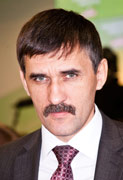|
|
|
Firsova A.V., Rakhimbayeva I.E.
FEATURES OF INTERPERSONAL INTERACTION OF THE QUARTET CLASS STUDENTS IN THE PROFESSIONAL TRAINING PROCESS [№ 4 ' 2020]
In the professional training of violinists, violists and cellists, the priority belongs to the Quartet classes of music schools and universities. In the process of studying the Quartet creativity of composers, young specialists master various techniques of ensemble performance, the ability to listen to all the voices of the ensemble and their part in a joint sound. This aspect of interpersonal interaction required in the process of the teacher in the Quartet class, because it is an important part of the development of the string player student in the training process, which calls for a comprehensive study of the problem and the search for modern, efficient working methods, which is the goal of the study. We conducted a theoretical study. During the study, it was found that the Quartet ensemble is a single complex organism, all parts of which are consistent with each other. In the conditions of an ensemble, forms of joint activity and psychological compatibility of participants in a small group are manifested. It was also determined that the principles of equality, mutual understanding and consent prevail among the team members. The individuality of each member of the string Quartet is closely interrelated with the collective focus of professional activity. There is an inseparability of psychological aspects with performing ones. String Quartet as a model of interpersonal interaction between members of the ensemble has a number of specific differences, in the process of functioning of which forms of joint activity are manifested. The traditional arrangement of the Quartet members on the stage platform in a semicircle allows you to establish instant contact of partners, so that the interaction in the Quartet is closer and more active. This condition in practice can strengthen the mutual understanding of musicians. Therefore, the individual characteristics of each member of the Quartet are closely related to the ensemble.
Krylova S.E., Firsova N.V.
EFFECT OF HEAT HARDENING ON THE BEHAVIOR OF THE EXPERIMENTAL STEEL GRADES WITH MICROALLOYING COMPLEX [№ 1 ' 2013]
The structure and properties of the new class of economically alloyed instrumental steels at various stages of heat treatment. It is shown that for these steels significant impact on the behavior of the operation mode has the final thermal hardening. The temperature-time parameters of the high holidays. A mechanism of dispersion hardening, based on qualitative and quantitative change in the ratio of the carbide component in the alloy.
|
|

Editor-in-chief |
Sergey Aleksandrovich
MIROSHNIKOV |
|
|


















